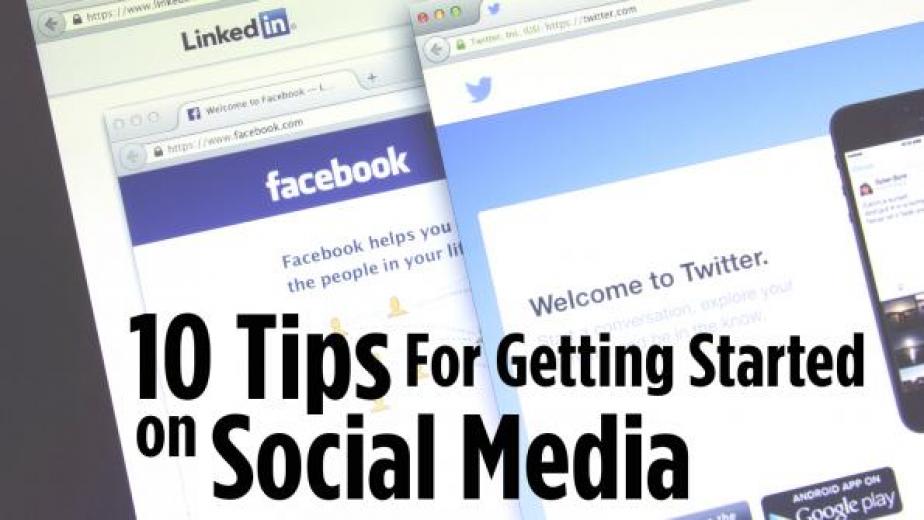1 11
1 11
Advisors that haven’t already incorporated social media into their practices are told constantly that they should. But getting started is a lot easier said than done, and it's even more difficult to figure out how to translate all those retweets and hashtags into actual business.
Winnie Sun, the managing director of Orange County, Calif.-based wealth management practice SunGroupWP, has more than 60,000 followers on Twitter and says she regularly uses her social channels to attract new clients. After she explained how she attracted a $10 million millennial client using LinkedIn, we asked her if she could share some tips for advisors looking to get started with their social networks.
So if getting on social media is part of your new year's resolutions for 2016, here are 10 ways to get started on the right track.
Social media, especially Twitter, is intimidating for most people at first, and even more so when you’re tying it to your professional livelihood. But the water always feels cold when you dip your toe in, so instead just dive in by downloading the apps for the big three (Facebook, Twitter and LinkedIn) and setting up a username. “Some people don’t want to be public, so they use their company name,” Sun said, adding that in retrospect, she wishes she used her personal name instead of “@SunGroupWP.” “It doesn’t matter so much about what it is, as long as there is consistency [across all platforms.]”
Go ahead and call it narcissistic, but choosing a photograph is one of the most important decisions you’ll make on social media. You want something that shows off your personality, looks good and will be noticed in a sea of millions of people. One tip from Sun was to use fluorescent colors: they stand out and tend to do well on social media.
Not all social platforms are created equal, and each one should be used differently. As a completely public channel and the easiest to get followers, Twitter is where you should be less discriminating about who you connect with to cast the widest net. LinkedIn is also easy to make connections, but it should be used for going after direct prospects. People are the most guarded on Facebook because of the network’s personal nature, so it’s the most difficult to build a network. Instead, use Facebook for current clients, making them a part of the “inner circle.”
This is a pretty easy step on Twitter as you’re only afforded a couple of sentences, but having a complete profile on LinkedIn is as important as a resume when applying to a job. It needs to be compelling enough that someone will want to connect with you – or at least open your messages – so its not enough to say “I’m an advisor at ABC Firm.” Think about what you want people to know without having to tell them, and review it every so often to update.
No one wants to just post into the void, so how do you start building your network? Sun said it could feel like the first day at a brand new school, so start out by first connecting with your friends, family, and anyone in your personal life that uses social media and doesn’t hate you. Advisors should dive into their Rolodex and add as many of them as possible. “People forget that social media starts with social,” Sun said. “At the end of the day, it’s about making friends.”
Sun says a good rule for posting is to share things that you would want to read personally. In the beginning it’s about testing the water to figure out what your audience is most attracted to, so sticking to things that interest or excite you is a good place to start. And while cats and pets will always do well on social, remember that you’re trying to also generate business.
A good way to think about social media is to think about cocktail parties: no one likes someone who just talks about himself or herself all the time. Respond to comments, share their posts, and develop meaningful online relationships rather than just advertise yourself. “For example, we had a client that posted a new video that she did of her business,” Sun said. “I took the link and I put it on all three of my channels, showing off my client and what she did.”
Arguably the most confusing part of social media, especially on Twitter, is the hashtags. Think of them as a way to index your tweets. Adding a “#” turns the following word or words into a searchable link in order to organize content around keywords. For example, if you want your post to be included in a group of content about “wealth management,” you would add “#wealthmanagement.” Sun recommends using as generic a word as possible, such as “advice,” “business” or days of the week, and said Instagram is a useful app for finding popular hashtags to join a trending conversation.
There are a number of tools out there for tracking what’s working, and what’s not, with social media. Facebook make it easy for professional pages with its built in analytics feature, and Klout does well for other networks.
Social media never stops, and that means you shouldn’t either. But if the idea of posting during weekends or during the workday sounds awful, there are other tools that can help. There are tweet schedulers like Tweetdeck, Hootsuite and Buffer that allow you to write tweets in advance and schedule them to post automatically. Just be careful about getting too attached to these tools, authenticity is key to social media success.

